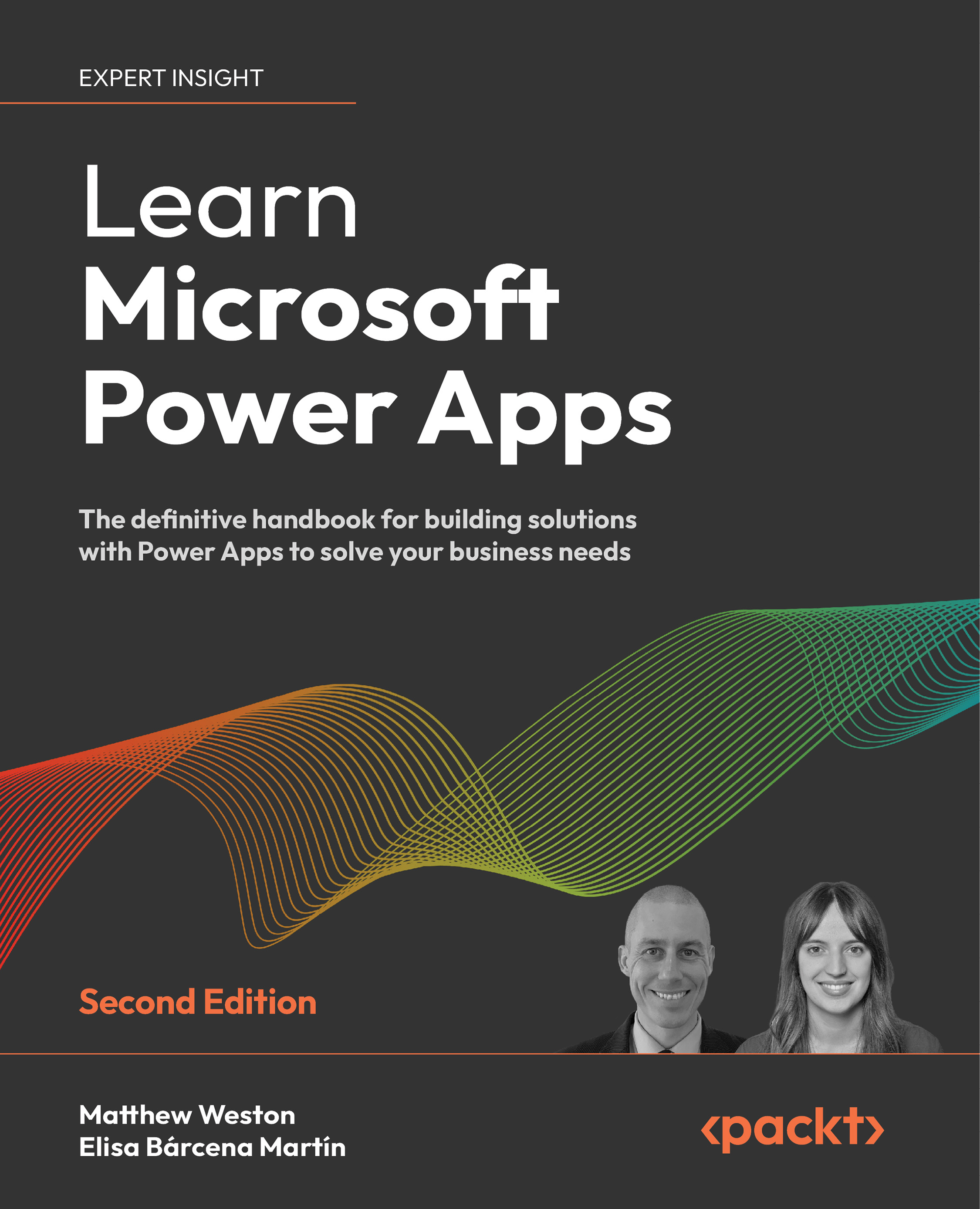In this chapter, we looked at the various types of apps that can be created using Microsoft Power Apps and the differences between canvas apps and model-driven apps. We explored the ways in which we can get started, whether that’s by using a blank app or by using one of the excellent templates that are provided by Power Apps.
As we explored the left-hand side menu, we came across connectors, data models in the form of tables, and Microsoft Power Automate, which is our business logic platform. We can combine all of these to create powerful apps without having to write any code.
We also looked at the key elements of Power Apps Studio, which is the key development tool on your Power Apps journey. We looked at various menus and how they can be used to apply basic styling and configuration to our app and components. We investigated the Insert menu and the types of controls that can be added through this menu, which range from inputs to media controls.
Then, we looked at the makeup of the main development area, including the screens list in the Tree view, which contains not only your screens but also any components that have been added to that screen. From here, we have the ability to undertake basic actions on those components, such as reordering, copying, and duplicating.
Finally, we started to delve into the realms of formulas and functionality through the formula bar and the properties pane. We can apply conditional logic using rules and see all of the available properties by selecting the Advanced tab.
In the next chapter, we’ll create our first canvas app.



 Free Chapter
Free Chapter
